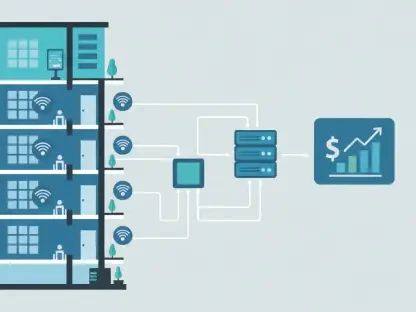On February 7, 2025, the Department of Defense (DOD) issued a directive to halt the use of project labor agreements (PLAs) for large-scale construction projects funded by $35 million or more in federal funds, a move that has sent ripples through the construction industry. The directive, coming in the form of a memo signed by John M. Tenaglia, instructed DOD contracting officers to eliminate PLA requirements from project solicitations. This decision was swiftly welcomed by the Associated General Contractors of America (AGC), who have long asserted that the PLA mandate, introduced under the administration of former President Joe Biden, was both unlawful and detrimental to fair competition in the industry.
The Legal Backdrop
This policy shift aligns with a pivotal ruling handed down by U.S. Federal Claims Judge Ryan Holte on January 21, 2025. Judge Holte found the imposition of PLAs on seven major contract procedures in 2024 to be arbitrary and capricious, pointing to federal research which suggested that PLAs stifled competitiveness. The ruling clearly rejected the notion that mandatory PLAs could be justified, and it criticized the ignoring of evidence that argued against their necessity. This decision impacted cases of contract protests spread across six states, involving organizations such as the U.S. Army Corps of Engineers, General Services Administration, and Naval Facilities Engineering Systems Command. Collectively, these entities form the core of the DOD’s construction operations, thus broadening the scope of the judgment.
The legal challenge to PLAs appears to be part of a broader industry movement advocating for fewer restrictions and more open competition in federal contract bidding. Dirk Haire, a partner at the legal firm Fox Rothschild, noted that Judge Holte’s ruling had severely weakened the legal ground on which the PLA mandate stood. This is likely to facilitate more bid protests against similar mandates, further extending the judgment’s impact. The decision thus serves as a clarion call for a reevaluation of federal contracting policies, guiding the construction sector towards less restrictive and more competitive practices.
Industry Reaction and Implications
The shockwaves from the DOD’s directive and subsequent legal rulings are reverberating throughout the construction industry. Jeffrey Shoaf, CEO of the AGC, lauded the DOD’s decision, highlighting it as a long-anticipated reversal of the Biden-era policy that he and the AGC have deemed illegal. He argued that the removal of PLA mandates would result in a more competitive bidding environment, broadening opportunities for contractors who had been previously sidelined due to these requirements. Shoaf’s sentiments are echoed by many in the industry, who see this policy change as an essential step towards rectifying what they view as an anti-competitive and exclusionary practice.
In practical terms, the policy shift is significant. The DOD, which awards billions of dollars in construction contracts annually, serves as a bellwether for other federal agencies. For instance, in November 2024, the DOD awarded a $2.3 billion contract, indicative of the high stakes involved in federal construction projects. This change is expected to lead to a domino effect, prompting other federal agencies to reevaluate and potentially abandon PLA mandates in favor of more open and inclusive procurement processes. The ramifications of these decisions extend beyond legal and industry circles, affecting contractors and labor forces on the ground.
The overarching message from the DOD’s decision and the subsequent judicial ruling is about fostering a more equitable and competitive landscape for federal construction contracts. By eliminating PLA requirements, the DOD has signaled its commitment to fair competition and its recognition of the industry’s call for change. This policy shift marks a significant turning point, reflecting a broad consensus that competitive bidding, rather than regulatory mandates, should govern federal contract awards. As the dust settles, it is widely anticipated that other federal agencies will follow suit, ushering in a new era of federal contracting standards.
Strategic Movement Towards Openness
On February 7, 2025, the Department of Defense (DOD) issued a directive to cease using project labor agreements (PLAs) for large-scale construction projects receiving $35 million or more in federal funding. This directive, encapsulated in a memo signed by John M. Tenaglia, instructed DOD contracting officers to remove PLA requirements from project solicitations. This move has sparked significant reactions within the construction industry. The Associated General Contractors of America (AGC) responded positively, supporting the decision. They have long argued that the PLA mandate, originally implemented during former President Joe Biden’s administration, was illegal and hindered fair competition within the industry. The elimination of this requirement is seen as a victory for many contractors who felt that PLAs favored unionized firms and excluded non-union competitors from bidding fairly on federal projects. The DOD’s decision is expected to have broad implications for future large-scale construction contracts.









